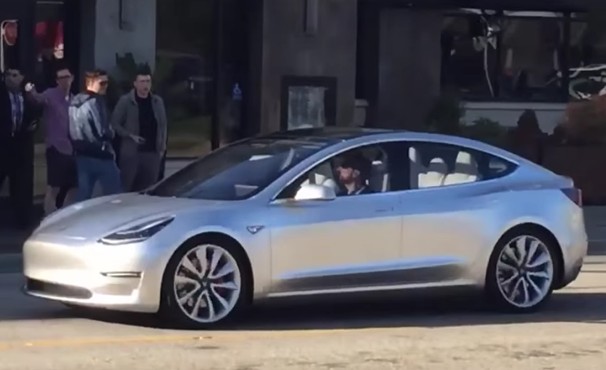
Tesla Model 3 Driving on a Public Road
Tesla Motors says it will start building its Model 3 sedan sometime between July and December next year, and it's targeting production of 100,000 in that period.
That's beyond a tall order, and many advocates, analysts, and owners are skeptical that the company can do it.
But if you accept the premise that it can, CEO Elon Musk and his 10,000 or more employees have a staggering amount of work in front of them.
DON'T MISS: All our Tesla Model 3 news
The Tesla Model 3, its third-generation vehicle, only debuted in March. Musk has promised two more sets of announcements about the car before production starts.
One of his main tasks, as Automotive News writer David Undercoffler suggested in a smart piece last month, will be to dial down expectations for the car in the interim while raising money.
The Tesla Model 3 won't be the first 200-mile electric car priced at less than $40,000 (that would be the 2017 Chevrolet Bolt EV, widely expected to go on sale at the end of this year or the start of 2017).

Tesla Model 3 spotted at service center
But for Tesla to meet its goal of building 100,000 Model 3s next year plus a like number of Model Ses and Model Xes on top of that, several things have to go exactly right.
Here's our list of critical tasks facing the company as it works to get the Model 3 out the door.
(1) Convincing suppliers it's real
To build cars, you need parts, and you need to have them in sufficient volume to meet your projected production rate.
That's where the Nevada gigafactory comes in: it is intended to produce battery cells and packs in sufficient numbers to enable that huge volume of Model 3 production.
But Tesla has hundreds of other suppliers, all of whom must be convinced that a company that built just 50,000 cars last year can build 200,000 next year.
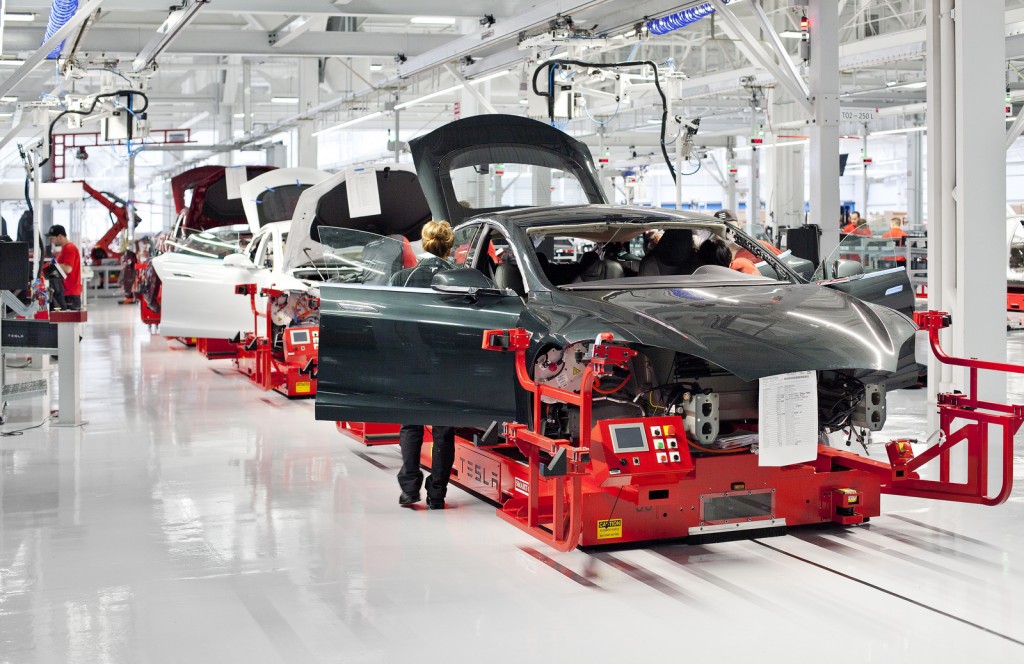
Tesla Model S undergoing assembly
As CleanTechnica noted in late March, not all of them are buying it.
Musk will no doubt point out that many of the first Model S suppliers took seriously one analyst's projection that it would build only 2,500 Model S cars its first year.
As a result, the company had to work closely with some suppliers to multiply their volume several times, and simply replace others who couldn't produce the necessary numbers.
Still, tooling and funding for tens of thousands of parts a year is different from hundreds of thousands of parts.
Tesla has an entirely new round of, "No, we're really serious" conversations it must conclude very soon to get its supply lines established and tested.
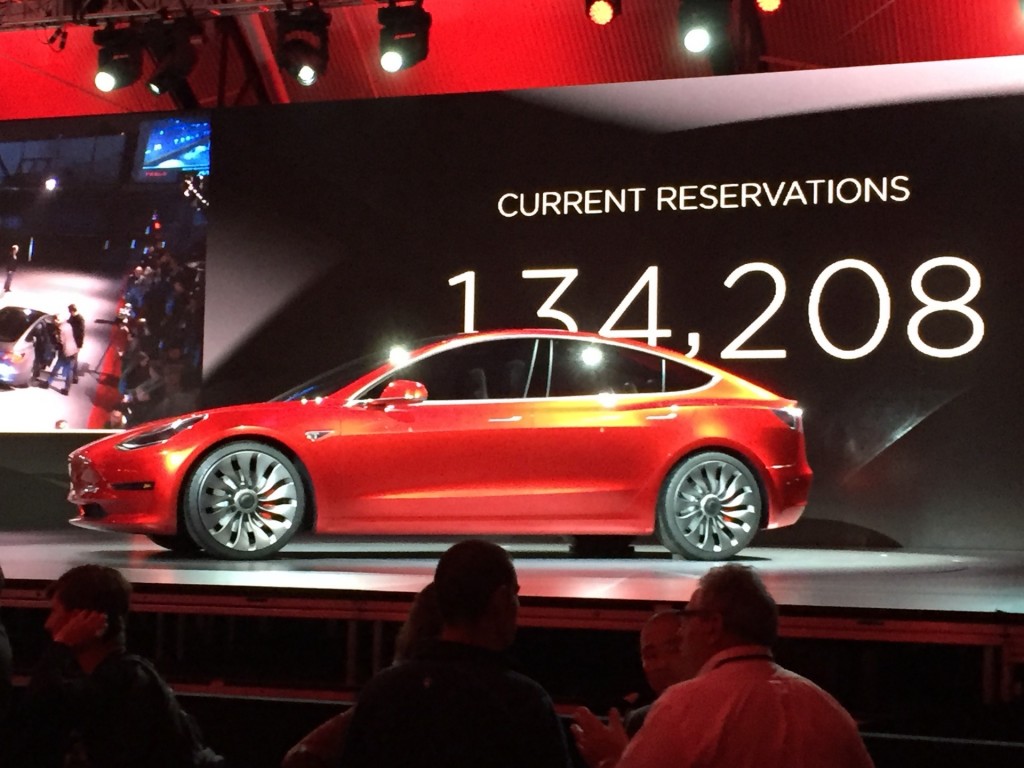
Tesla Model 3 design prototype - reveal event - March 2016
The 380,000-plus deposits of $1,000 each for Model 3s that Tesla received in late March and early April, however, has probably helped in those discussions.
(2) Making it simple, easy, quick, and cheap to build
If the prolonged, painful, delayed, and glitch-ridden launch of the Tesla Model X crossover utility vehicle has taught Tesla one thing, it should be that making a car easy to build is paramount to building it in volume.
CHECK OUT: Can Tesla learn from its past, and make Model 3 easy to build?
Musk himself has acknowledged that the company overshot on the car, adding features (for which read "falcon doors") that may not have made sense and that needlessly complicated its launch.
He has suggested that the company has learned its lesson, and will apply it to designing the Model 3 for high-volume production.
Let's hope so.

Tesla Model 3 Driving on a Public Road
(3) Keeping quality high while hitting the schedule
Every new vehicle has some quality challenges as it goes into volume production, and the same has applied to every Tesla.
It's an inevitable part of the process that seasoned manufacturing engineers anticipate, with plans to make numerous small tweaks as production ramps up and issues come to light.
But a corollary of the need to keep the Model 3 simple and quick to build is the related need to keep quality high as numbers grow and early design changes are identified as necessary.
The fear among Tesla executives after the Model X launch is likely facing a tradeoff between final prototype testing and design tweaks and the need to keep to the astoundingly aggressive schedule set by their CEO.
The hope is that such a tradeoff is never required.
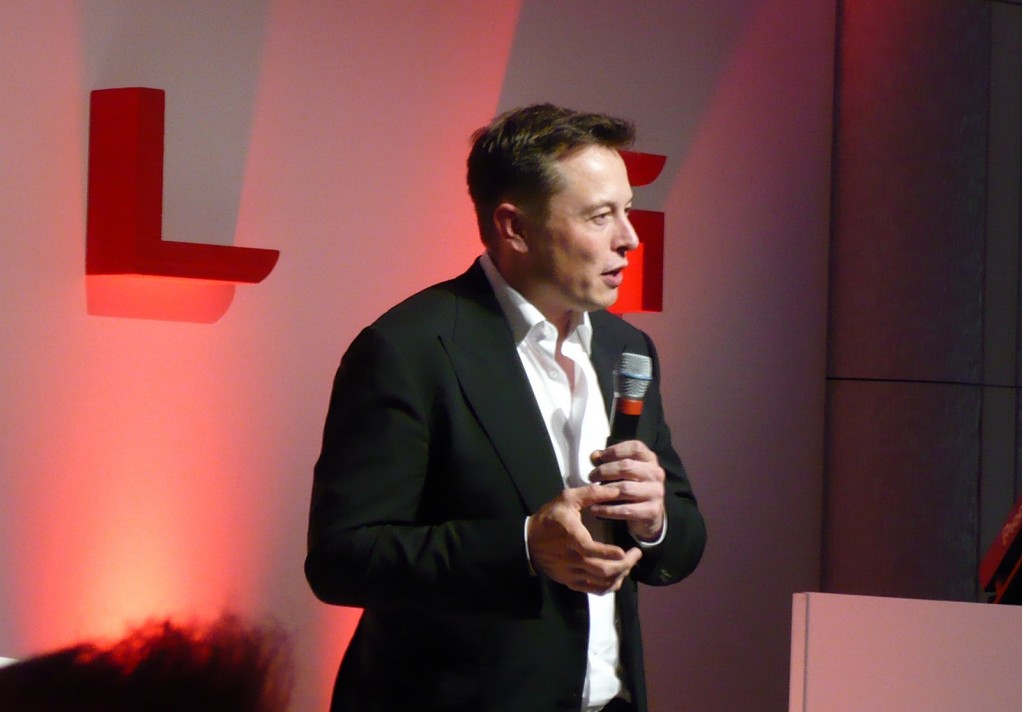
Tesla Motors CEO Elon Musk at Tesla Store opening in Westfield Mall, London, Oct 2013
But it will be a mark of Tesla Motors' desire to become a long-lived volume carmaker if it ends up delaying either a launch or higher production rates to ensure that the first Model 3s roll out with fewer issues than any of their predecessors.
We'll see what happens if Musk has to sign off on that decision.
(4) Scaling up the Supercharger network
Beyond the Model 3 itself, there's an entire infrastructure that has to be radically expanded to handle much larger volumes of Tesla cars in 2018 and thereafter.
First is the Supercharger network of fast-charging sites, one of Tesla's key advantages over any other electric-car maker and a source of pride at the company and among its customers and fans.
![Tesla Model S at Supercharger site in Ventura, CA, with just one slot open [photo: David Noland] Tesla Model S at Supercharger site in Ventura, CA, with just one slot open [photo: David Noland]](https://images.hgmsites.net/lrg/tesla-model-s-electric-car-road-trip-upstate-new-york-to-southern-california-photo-david-noland_100500011_l.jpg)
Tesla Model S at Supercharger site in Ventura, CA, with just one slot open [photo: David Noland]
Owning a Tesla Model S or Model X admits you to an exclusive club whose members can afford to buy cars costing $60,000 or more.
Even if the average transaction price of a "$35,000" Model 3 may be more than $40,000, vastly greater numbers of people will buy them (some significant fraction of those 400,000 deposits).
They will expect to be able to use the Supercharger network, even if they pay for it as Musk has suggested they will.

Tesla Model 3 Driving on a Public Road
And Tesla has to ensure that Supercharger sites can handle vastly increased usage, especially along those routes that have peak travel periods (San Francisco to Los Angeles on Friday evenings and Sunday afternoons, for instance).
Its facilities planners may want to plan on long days for the next two years. Or more.
(5) Scaling up the Service Centers and Tesla Stores
Similarly, Tesla will have to open more stores to display its cars, and service centers to repair and maintain them.
If Tesla Motors appears to be entering the ranks of volume carmakers, it will likely face a renewed onslaught of lobbying from state and national auto-dealer lobbyists who fear its direct online-sales model.
Those battles are a sideshow, but new Tesla customers will expect there to be service centers that are at least as convenient as those from Toyota or BMW.
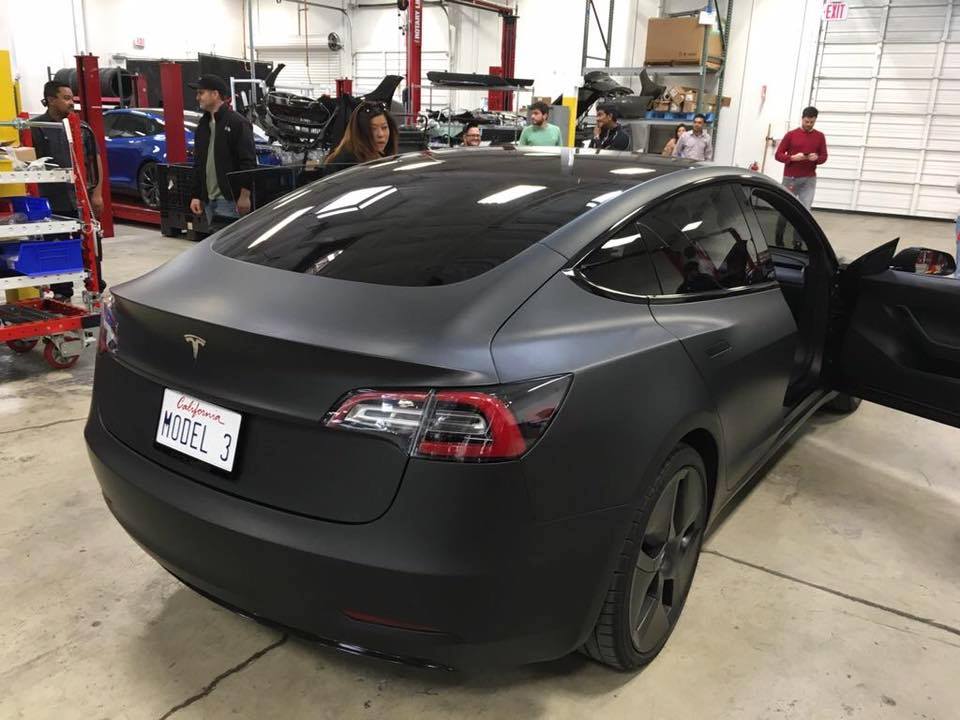
Tesla Model 3 spotted at service center
Tesla's need to scale up its current high levels of service, including pickup and delivery under some circumstances, to handle 10 times the number of cars will be a major challenge.
And the earliest of those new buyers will be key to setting public perception of the Model 3 as the company works to boost it into mass-market territory.
(6) Turning reservations into sales
Finally, Tesla may have received almost 400,000 deposits from potential buyers around the world, but not all of those will turn into actual sales of a car for a five-figure price.
A deposit of $1,000, which Tesla says is refundable (although the company used the deposit proceeds to pay down debt), is far more of a commitment than that of a "hand-raiser" who wants to be informed about a car as its nears sale.
But it remains to be seen what happens to public perception of the car during the first year of Model 3 production, whenever that is and however many the company builds.

Tesla gigafactory, March 2016, shown in drone footage posted to YouTube by Above Reno
The willingness of most depositors to convert to buyers will depend on how early owners are treated, how much they like their cars, and what kind of reviews the car receives.
And a lot of nine-figure decisions will depend on those factors, which are unknowable until after the Model 3 starts rolling off the lines.
_______________________________________













